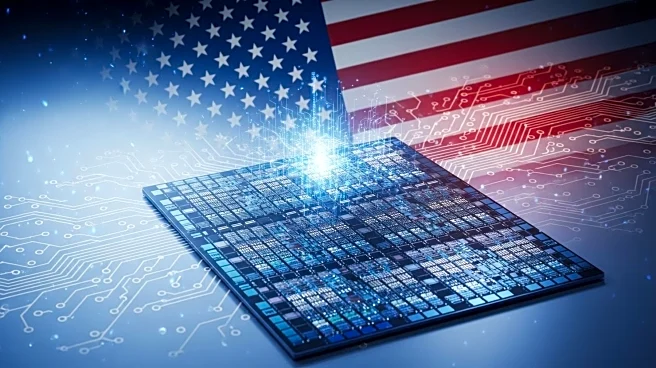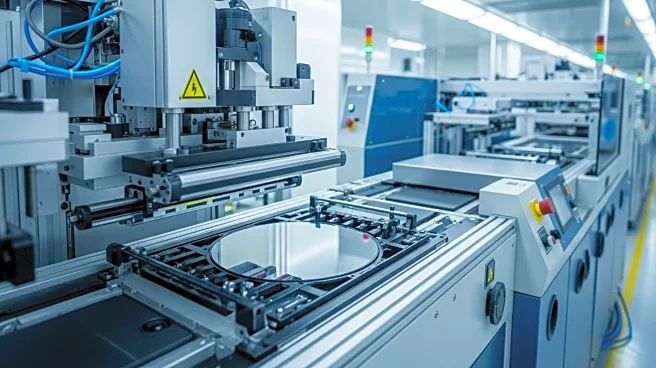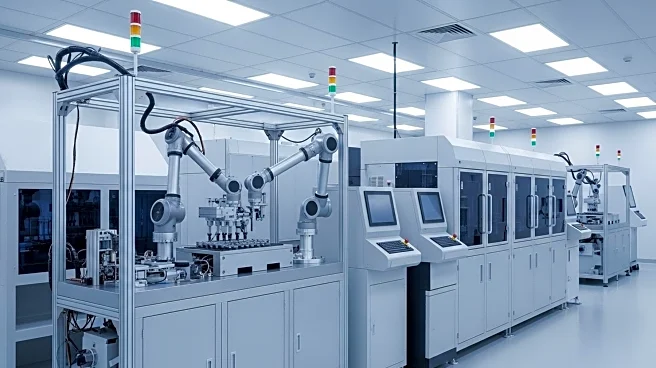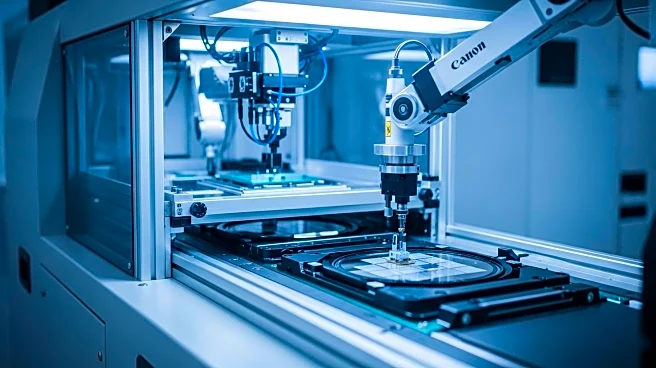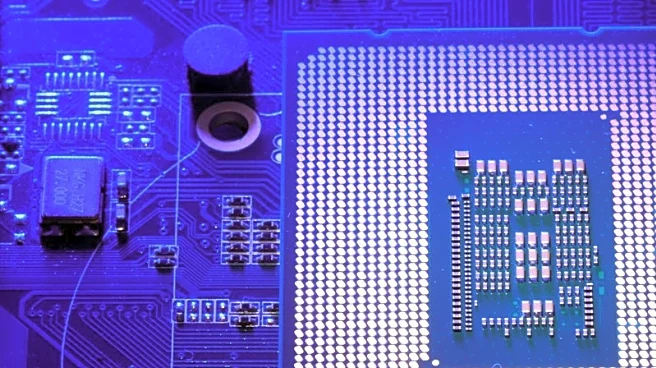What is the story about?
What's Happening?
The Trump administration is reportedly considering a new policy aimed at increasing domestic semiconductor production. This policy would require U.S. semiconductor companies to manufacture an equal number of chips domestically as their customers import from overseas manufacturers. Companies failing to meet this 1:1 production-to-import ratio could face tariffs. This approach is part of President Trump's ongoing efforts to bring semiconductor manufacturing back to the United States, a topic he has been vocal about since August. The timeline for achieving this ratio remains unclear, and the policy could potentially impact the U.S. chip industry until domestic manufacturing can meet demand.
Why It's Important?
The proposed policy could significantly impact the U.S. semiconductor industry, which is crucial for various sectors, including technology and automotive. By imposing tariffs on companies that do not meet the production ratio, the administration aims to incentivize domestic manufacturing. However, this could also lead to short-term challenges for the industry, as ramping up production capacity is a complex and time-consuming process. The policy could encourage investment in U.S. manufacturing infrastructure, but it may also strain companies that rely on global supply chains. The outcome of this policy could influence the U.S.'s competitive position in the global semiconductor market.
What's Next?
If implemented, the policy could lead to increased investment in U.S. semiconductor manufacturing facilities. Companies like Intel, which has faced delays in opening its Ohio plant, may need to accelerate their efforts to meet the new requirements. Additionally, foreign companies like Taiwan Semiconductor Manufacturing Company (TSMC) may increase their U.S. investments, as TSMC has already committed $100 billion over the next four years for U.S. infrastructure. The administration's decision and its potential impact on the industry will be closely watched by stakeholders.
AI Generated Content
Do you find this article useful?






